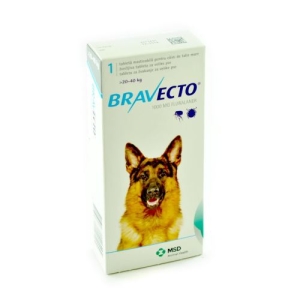How we protect animals against ticks and fleas
If you’ve read this article, you’re probably concerned about how you can protect your four-legged friend from fleas and ticks. Congratulations on this – you are a responsible owner who cares about the four-legged soul in your care.
So, before you head to the park or leave your puppy in the grass in the yard, read this article. We thought of it as a small guide to understand what dangers we expose our pets to when we don’t protect them properly and what the consequences of the bites of these parasites could be.
Fleas and ticks are small, but they can cause big problems:
- Itching and irritation: They bother the animal with an unpleasant sensation, leading to excessive scratching, skin damage and even infections.
- Allergies: Flea saliva can trigger severe allergic reactions in some dogs and cats, manifested by redness, inflammation and hair loss.
- Serious diseases: Ticks are vectors of dangerous diseases such as Lyme disease, babesiosis, tick-borne viral encephalitis and anaplasmosis.
HOW DO WE PROTECT ANIMALS FROM FLEA AND TICK BITES?
Veterinarians recommend two levels of action – prevention and detection. Prevention, as we all know, is the preferred course of action, but the pet owner must act accordingly.
Prevention of tick bites in animals
- Antiparasitic equipment: Choose collars, pipettes, sprays or chewable tablets suitable for the species, age and weight of the animal. Consult your veterinarian for personalized recommendations. External deworming of dogs and internal deworming are mandatory!
- Regular checks: After each walk, carefully examine the animal’s fur, especially the hidden areas, to detect and remove parasites.
- Impeccable cleanliness: Vacuum carpets and bedding regularly, washing them at high temperatures to remove fleas and their eggs.
Post-infection detection and action
- Be vigilant: Watch for signs of infestation, such as excessive itching, scratching, scraping of the skin, lesions, or presence of parasites.
- Remove immediately: Use special tweezers to remove ticks by gentle rotation. Against fleas, use antiparasitic shampoo and comb the fur with a special comb.
- Consult your vet: Severe infestations or concerns about treatment require personalized advice from your vet.
DISEASES ASSOCIATED WITH TICK BITES IN DOGS
Ticks are not only unpleasant parasites, but can be vectors of serious diseases for our dogs. Here is a detailed overview of the symptoms specific to each condition:
Lyme disease (Lyme disease) – the most well-known condition triggered by a tick bite
Symptoms:
- Persistent fever (may last for weeks)
- Lethargy and weakness
- Joint pain and inflammation (lameness, stiffness)
- Swelling of the lymph nodes
- Loss of appetite
- In severe cases: cardiac (myocarditis), neurological (meningitis) or renal (glomerulonephritis) disorders
Babesiosis – the most common after a tick bite, with the most serious consequences for our four-legged friend
Symptoms:
- High fever
- Lethargy and severe weakness
- Dark urine (reddish or brown)
- Jaundice (yellowing of the skin and mucous membranes)
- Anemia (paleness, weakness, rapid breathing)
- Breathing difficulties
- Enlargement of the liver and spleen
Tick-borne viral encephalitis
Symptoms:
- High fever
- Severe headaches
- Vomiting and nausea
- Confusion and disorientation
- Muscle weakness and paralysis
- In severe cases: coma and death
Anaplasmosis
Symptoms:
- Persistent fever
- Lethargy and weakness
- Loss of appetite
- Muscle and joint pain
- Decreased number of platelets (increased risk of bleeding)
- In severe cases, liver and spleen disorders
Attention – early detection is essential!
Observing any of the symptoms listed above should alert you and prompt you to consult your veterinarian immediately. Early diagnosis and prompt treatment can distinguish between a full recovery and serious, even fatal, complications.
ADDITIONAL RECOMMENDATIONS TO PREVENT DISEASES CAUSED BY TICKS AND FLEA BITES IN QUADRUPEDS
- Vaccination: Talk to your vet about annual Lyme disease vaccinations, an essential preventative measure to protect your dog.
- Careful monitoring: After a walk in areas with abundant vegetation, carefully examine the dog’s fur to detect and remove ticks.
- Regular consultations: Regular visits to the veterinarian allow constant monitoring of the dog’s health and early identification of potential problems.
Together, through information, prevention and prompt action, we can protect our furry friends from tick and flea-borne diseases and give them a long and healthy life!





